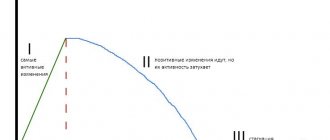Authors:
, And . May 13, 2021
Is periodizing a strength training program necessary for your clients?
Much of the literature on periodization to date has focused on increasing strength and improving athletic performance in athletes seeking to balance the demands of general fitness, specific fitness, and competition (Bartholomew, 2014). But many non-athlete clients also seek to accelerate muscle growth, and few studies address the question of whether the periodization model should be used in hypertrophy-focused strength training programs for non-athletes. This article reviews the best research to help answer the important question: Will periodizing a strength training plan help maximize skeletal muscle hypertrophy?
Some terms
Strength training programs consist of numerous variables including volume, intensity, frequency, rest intervals, exercise selection, and order (Williams et al., 2017). Periodization is the planned, cyclical (i.e. the program is repeated) manipulation of these strength training variables to achieve maximum results at specific times of the year (Evans, 2019). Periodic strength training plans consist of several cycles:
- macrocycle (6-12 months);
- mesocycles (~ 1 month);
- microcycles (~ 1 week) (Evans, 2019; Issurin, 2010).
The length of each training cycle will vary across sports depending on the competition schedule and the athlete's goals. Evans cites research noting that long periods of training without variation will lead to stagnation and fatigue. Thus, the primary goal of periodization is to provide structured variability to combat plateaus or declines in physical performance.
Types of periodization
Research focuses primarily on the three types of periodization most commonly used: linear, block, and wave.
Linear periodization
Linear periodization (LP)
is a training strategy that starts with high volume and low intensity and then progresses to low volume and high intensity (Grick et al., 2017). LP was introduced in the late 1950s by Russian professor Lev Matveev and is also called traditional periodization in the literature (Kok, Hamer, and Bishop, 2009; Bartolomei et al., 2014). With linear periodization, athletes gradually increase intensity as the program progresses while decreasing volume (see Figure 1).
Theoretically, the initial high-volume phase emphasizes hypertrophic adaptations, and the subsequent high-intensity period challenges the body's neural mechanisms (Kock, Hamer, & Bishop, 2009). In Fig. Figure 1 shows how in the LP model, in parallel with intensity, the specificity of training methods increases. Of course, each trainer will have their own LP training program, but the general rule is to change the volume and intensity every 4 weeks (Grick et al., 2017).
Rice. 1. Linear (traditional) periodization model.
Please note that as intensity increases, exercise volume decreases. In parallel with intensity, the specificity of training methods increases.
Source: Turner, 2011.
Block periodization
Block periodization (BP)
consists of several mesocycles with a concentrated effect on a specific indicator (Bartolomei et al., 2014) (Fig. 2). Each mesocycle, or block of time, prepares the client for the next cycle. For athletes, mesocycles are divided into three categories: accumulation, transformation and implementation (Issurin, 2010). The BP methodology was introduced in the mid-1980s by Russian scientist Yuri Verkhoshansky to meet the changing needs of athletes (Bartolomei et al., 2014).
Battery pack
focuses primarily on general aerobic endurance, core muscle strength, and fundamental movement techniques (Issurin 2010).
During the transformation block,
the athlete performs specialized exercises for muscular endurance and practices techniques specific to his sport (Issurin, 2010).
Finally, the implementation block
is the stage of preparation for competitions, focused on achieving maximum speed and performance. Each block lasts 2–4 weeks, depending on the length of the program and the client's specific goals (Issurin, 2010).
Rice. 2. Block periodization model. Repetitions - repetitions. Accumulation - accumulation. Transformation - transformation. Transition week - transition week. Realization - implementation. Weeks - weeks.
This is a model of block periodization of training to improve general fitness with 4-week blocks (compiled by the authors of this article). The goal of this program is to increase strength and muscle mass by progressively increasing training intensity (and decreasing volume) every 4 weeks. Please note that weeks 5, 10 and 15 are transition weeks of light intensity exercise. Approaches, choice and order of exercises, rest between approaches will be different for each client.
Wave-like periodization
Wave-like periodization (WP)
involves frequent changes in volume and intensity within a training program; these changes often occur weekly (WUP) and/or daily undulating periodization (DUP) (Evans, 2019) (Figures 3 and 4 with daily and weekly undulating periodization patterns). During the WUP program, you cycle through light, medium, and high-intensity workouts for weeks. During the DUP program, the intensity varies daily. Essentially, this means that in the DUP program, a client can perform both hypertrophy, strength, and power training in one week.
Evans summarizes research indicating that VP programs are best suited for strength development in strength training programs. McNamara and Stern (2010) state that the benefit of an undulating program is that it helps prevent boredom and overtraining. It is also easy to adapt to the client's travel schedule. Frequent changes in volume and intensity in EP programs can induce greater neural adaptations while preventing the development of fatigue (Pelzer, Ulrich, & Pfeiffer, 2017). If you graph the intensity, it will have a wave-like shape.
Rice. 3. Wave-like model of periodization by week. REPETITTIONS - repetitions. TRANSITION WEEK - transition week.
Please note that weeks 5 and 10 are transitional weeks. The intensity in this example is based on the percentage of the client's 1 rep max (1-RM).
Adapted from Bartholomew et al., 2015.
Rice. 4. Wave-like model of periodization by day. TO FATIGUE - to failure.
This program is based on intensity to failure in the rep range, where participants perform all exercises to muscle failure in each rep range (2-4, 8-12, 20-30). This pattern continues in subsequent weeks of training.
Adapted from Scheunfeld et al., 2021.
Load cycling in bodybuilding
Article outline:
1. Load cycling.
2. Examples of load cycling.
- For beginners and intermediate levels.
- For the more advanced.
1. Load cycling.
Load cycling –
alternating the load in the micro (weekly split) and macrocycle (sum of several weekly splits). The main purpose of load cycling is to make it more difficult for the body to adapt to the training load.
The human body constantly adapts to a changing external environment. Training is stressful for the body, so it adapts (by muscle growth, development of physical qualities and much more) in order to avoid future stress. The main goal of the training process is to provide the necessary load and recovery so that the body can adapt.
From the author: The body is very smart, thanks to millions of years of evolution, it adapts to the load if it carries more irritation than is comfortable for orgasm. Example: a certain person performs a bench press of 100 kg for 10 repetitions, doing it very hard. The body receives stress and adapts by increasing muscle mass and strength results, so that in the future this stress will not be a strong irritation. After some time, a person performs the same bench press easily, because the body has already adapted. If in the future a person continues to lift the same 100 kg, the body will stop regarding this as stress and the adaptation process will not occur, a plateau will set in. And therefore it is necessary to give a different load all the time so as not to stop the adaptation process.
Conclusion:
When building a training process, it is necessary to cycle the load.
Give more load so that the body adapts, give light load to restore the body. Use a variety of exercises that will carry training stress. Vary training volume
and
intensity
.
Criteria by which the load is cycled:
Volume:
- Projectile weight;
Approaches and Repetitions – by increasing or decreasing the number of repetitions and approaches, you can increase or decrease the load; the total training volume is determined by the number of approaches and repetitions.
Intensity:
- Rest time between sets –
decreasing the rest time increases the overall intensity of the workout. - Intensity increasing methods are
necessary to increase the intensity of the workout, and accordingly the load.
Conclusion:
From the criteria by which the load is cycled, it can be understood that there are many methods for increasing or decreasing the load, as well as changing the training effect, to complicate the adaptation process.
2. Examples of load cycling.
From the author: Many people will immediately ask how to track their training load. Tracking training load in bodybuilding (BB) is very difficult, due to the large number of different criteria for assessing load and methods of increasing intensity, which significantly affect the overall training load.
Many experts recommend using a load assessment system in weightlifting, as in weightlifting, based on the number of lifts of the barbell (RPR) and the average relative intensity (ARI) of these lifts. This is extremely incorrect and does not give a complete picture of the real load.
Firstly, in weightlifting almost all exercises are performed with a barbell. While in BB they occupy a smaller part of all exercises. And, as you know, exercises with a barbell have a stronger irritation (and training effect) than exercises on blocks and machines, due to the greater inclusion of various muscle groups. It should also be noted that many exercise machines partially remove weight. Example: 100kg squats 3 sets of 10 reps can have a greater training effect than 100kg leg press 3 sets of 10 reps.
Secondly, in weightlifting they do not use methods of increasing intensity and the rest between all approaches is almost the same, so the KPS and UOI show a more objective picture. While in the BB the picture will not be as objective. Example: Bench press 100 kg 2 sets of 10 repetitions with 120 seconds rest between sets and 100 kg 2 repetitions with 60 seconds rest have a different training effect, while the KPS and UIO will show that the exercises carry the same load.
Therefore, I recommend tracking your training load based on how you feel and your actual progress. If your own weight increases while you gain muscle mass, you are on the right track. Of course, it is much more difficult for a beginner to intuitively determine the load, so in this chapter I will give two examples of load cycling, for beginners and intermediate levels,
and a second example for
the more advanced.
Load cycling for beginners and intermediate levels.
A beginner immediately needs to discard all methods of increasing intensity and concentrate on the main indicators by which cycling will take place:
- Exercises.
- Sets and reps.
Example of a training program for 4 weeks
, cycling using the example of training the pectoral muscles.
| Week 1 | |||
| № | Exercises | Approaches | Replays |
| 1 | Bench press | 3 | 8 |
| 2 | Incline Dumbbell Flyes | 3 | 10 |
| 3 | Reduction on the block to the bottom | 2 | 12 |
| Week 2 | |||
| № | Exercises | Approaches | Replays |
| 1 | Incline Barbell Press | 3 | 10 |
| 2 | Dumbbell flyes on a horizontal bench | 3 | 10 |
| 3 | Reduction on the block to the bottom | 3 | 10 |
| Week 3 | |||
| № | Exercises | Approaches | Replays |
| 1 | Bench press | 3 | 8 |
| 2 | Incline Dumbbell Press | 2 | 8 |
| 3 | Dumbbell flyes on a horizontal bench | 2 | 10 |
| Week 4 | |||
| № | Exercises | Approaches | Replays |
| 1 | Incline Barbell Press | 4 | 10 |
| 2 | Dumbbell bench press | 4 | 10 |
Program description:
Week one:
- 3 exercises (multi-joint with a barbell, single-joint with dumbbells, single-joint on a machine).
- A total of 7 approaches per muscle group.
- Repetitions – 8-12.
Week two:
- 3 exercises (multi-joint with a barbell, single-joint with dumbbells, single-joint on a machine).
- A total of 8 approaches per muscle group.
- Repetitions – 10.
Changes in the second week:
- Emphasis on the pectoral muscle section (In the first week: 1 exercise - middle of the pectoral muscles, 2 - top, 3 - bottom. In the second: 1 - top, 2 - middle, 3 - bottom.).
- Increase the number of approaches by 1.
- Changing the number of repetitions.
Third week:
- 3 exercises (multi-joint with barbell, multi-joint with dumbbells, single-joint with dumbbells).
- A total of 7 approaches per muscle group.
- Repetitions – 8-10.
Changes for the third week:
- Number of multi-joint exercises (in the first and second weeks - 1, in the third - 2).
- Emphasis on the pectoral muscle section. 1 – middle. 2 – top, 3 – middle.
- Reducing the number of approaches by 2.
- Changing the number of repetitions.
Fourth week:
- 2 exercises (multi-joint with barbell, multi-joint with dumbbells).
- A total of 8 approaches per muscle group.
- Repetitions – 10.
Changes in the fourth week:
- Number of exercises (reduced to two).
- Emphasis on the pectoral muscle section. 1 – middle. 2 – top.
- Increase the number of approaches by 1.
- Changing the number of repetitions.
From the author: This program is just an example of load cycling. As you can see, all 4 workouts are completely different from each other, although the set of exercises is not too large (I believe that beginners are better off using a more limited set of exercises, but more effective exercises).
Varying the load for different exercises, decreasing and increasing the number of repetitions and approaches, will make it difficult for the body to adapt to the load. And these limited techniques will be sufficient at low and medium levels of training.
An example of load cycling for more experienced, advanced athletes.
A more experienced athlete will make little progress unless various methods of increasing intensity are used. Therefore, it is advisable to cycle the load according to the following indicators:
- Number of training days.
- Combinations of muscle groups.
- Weight, reps and sets.
- Methods for increasing intensity.
Example of a training program for 4 weeks
, cycling using the example of training the pectoral muscles.
| Week 1 | ||||
| № | Exercises (increase method. Int.) | Approaches | Replays | Time relax |
| 1 | Bench press (+forced reps) | 4 | 8/8/7/6+2 | 180 sec |
| 2 | Incline Dumbbell Press | 3 | 10 | 120 sec |
| 3 | Reduction on the block to the bottom | 3 | 12 | 90 sec |
| 4 | Rolling forward on a block (weight drop) | 3 | 10+8 | 90 sec |
| Week 2 | ||||
| № | Exercises | Approaches | Replays | |
| 1 | Incline Dumbbell Press | 4 | 10 | 60 sec |
| 2 | Dumbbell flyes on a horizontal bench | 4 | 12 | 60 sec |
| 3 | Reduction on the block to the bottom (partial repetitions) | 3 | 12+3/12+2/11+2/10+2 | 60 sec |
| 4 | Pull up on the block (weight drop) | 3 | 12+3/12+2/11+2/10+2 | 45 sec |
| Week 3 | ||||
| № | Exercises | Approaches | Replays | |
| 1 | Bench press (+partial reps) | 4 | 10/10/9/8+1 | 180 sec |
| 2 | Incline barbell press (+forced reps) | 4 | 10/10/9/9+2 | 180 sec |
| 3 | Reduction on the block to the bottom | 4 | 15 | 90 sec |
| Week4 | ||||
| № | Exercises | Approaches | Replays | |
| 1 | Dumbbell bench press | 5 | 10 | 180 sec |
| 2 | Incline Dumbbell Press | 5 | 10 | 180 sec |
| 3 | Dumbbell press on an incline bench with your head down | 5 | 10 | 180 sec |
Program description:
Week one:
- 4 exercises (multi-joint with a barbell, single-joint with dumbbells, 2 single-joint on the machine).
- A total of 13 approaches per muscle group.
- Repetitions – 8-12.
- Rest time between approaches is 90-180 seconds.
- Methods to increase intensity are forced repetitions and weight loss.
Week two:
- 4 exercises (multi-joint with dumbbells, single-joint with dumbbells, 2 single-joint on the machine).
- A total of 14 approaches per muscle group.
- Repetitions – 10-12.
- Rest time between approaches is 45-60 seconds.
- Methods to increase intensity are partial repetitions and weight loss.
Changes in the second week:
- Changes in exercises (reduced number of multi-joint exercises and removed barbell exercises).
- Emphasis on the pectoral muscle section (first week: 1 – middle. 2 – top. 3 – bottom. 4 – middle. Second week: 1 – top. 2 – middle. 3 – bottom. 4 – top.)
- Increase the number of approaches by 1.
- Changing the number of repetitions.
- Reduced rest time between sets.
- The types of intensity increases have been changed.
Week three:
- 3 exercises (2 multi-joint with a barbell, single-joint on a machine).
- A total of 12 approaches per muscle group.
- Repetitions – 10-15.
- Rest time between approaches is 90-180 seconds.
- Methods for increasing intensity are partial and forced repetitions.
Changes for the third week:
- Change of exercises (reduced number of exercises, increased number of multi-joint exercises and added barbell exercise).
- Emphasis on the pectoral muscle section (1 – middle. 2 – top. 3 – bottom).
- The number of approaches has been reduced by 2.
- Changing the number of repetitions.
- Increased rest time between sets.
- The types of intensity increases have been changed.
Week four:
- 3 exercises (3 multi-joint exercises with dumbbells).
- A total of 15 approaches per muscle group.
- Repetitions – 10.
- Rest time between approaches is 180 seconds.
- Methods for increasing intensity - no.
Changes in the fourth week:
- Changing exercises (no barbell exercises, only dumbbells).
- The number of approaches has been increased by 2.
- Changing the number of repetitions.
- Increased rest time between sets.
- Methods for increasing intensity have been removed.
From the author: This program is an example of load cycling at a more advanced level. Remember, this is all just an example so that you can navigate in building a program, I hope my examples will help you create your own training program.
The Unique Benefits of Periodized Strength Training
- Lifting weights in one intensity zone over time can cause performance to stagnate (Turner, 2011). A periodic program prevents stagnation by constantly overloading the neuromuscular system with varying intensities.
- Continuous training with heavy loads can lead to excessive fatigue, overtraining, and soft tissue injuries (Turner, 2011; Williams et al., 2017). Intermittent plans involve undulating periods of low, moderate and high volume and intensity to prevent overtraining and deterioration in performance.
- In accordance with the SAID principle (specific adaptations to imposed demands), periodic plans allow personal trainers and their clients to create a program to achieve a variety of specific training results.
- A brand new study shows that low-intensity strength training (30% of 1-RM) improves mitochondrial quality and quantity (i.e., ATP production of cell organelles) (Lim et al., 2019). Thus, intentionally incorporating low-intensity blocks will also improve the aerobic capacity of skeletal muscle fibers.
- Periodization allows trainers to easily incorporate taper weeks into a training program to promote recovery and promote neuromuscular adaptations (Turner, 2011).
- Periodization allows personal trainers to schedule push-out phases (short microcycles of increasing volume and/or intensity that provide a powerful stimulus for adaptation).
Periodization and hypertrophy: main research results
Table 1. Increase in thickness of vastus lateralis and rectus femoris
| Muscle | Traditional periodization | Wave-like periodization by day |
| proximal VL | 19% | 14% |
| average VL | 18% | 17% |
| distal VL | 21% | 19% |
| RF | 16% | 11% |
The researchers measured the vastus lateralis using ultrasound at 33% (proximal VL), 50% (middle VL) and 66% (distal VL) of the femoral length, defined as the distance from the greater trochanter to the knee joint space. They performed an ultrasound examination of the rectus femoris approximately halfway between the anterior superior iliac spine and the proximal superior border of the patella.
Source: Peltzer, Ulrich and Pfeiffer, 2021.
Table 2. Ultrasound findings show that muscle size increases with Daily Undulating Periodization (DUP) compared to Constant Load (CSLD)
| Side to be measured | DUP % increase | CSLD % increase |
| vastus laterals | +7,6% | +8,6% |
| biceps | +6,6% | +5,0% |
| triceps | +6,4% | +4,2% |
Source: Scheunfeld et al., 2021.
Two studies in the past few years have focused on muscle hypertrophy as a result of periodization. One study focused on women doing moderate strength training and the other on men doing heavy strength training.
Here are reviews of these two works.
Women's moderate strength training
Pelzer, Ulrich, and Pfeiffer (2017) conducted a very interesting study with 19 college women, none of whom were professional athletes. The girls had been doing strength training for some time before (on average about 28 months). Participants were randomly assigned to one of two conditions on each leg: daily undulating periodization or traditional periodization (i.e. linear, as you remember). The participants controlled themselves, training one leg under one periodization, the other under the other. All participants trained 3 days a week for 6 weeks, for a total of 18 sessions and only one exercise - leg extension.
For the DUP leg, the intensity of 40%, 60% and 80% of 1-RM alternated daily, and for the TP leg, the exercise was performed at the same intensity for 2 weeks, starting at 40%, then the intensity steadily increased to 60%, and then up to 80% of 1-RM. Range of motion, volume, and time under tension were identical for both legs. Participants completed all sets with one leg before moving on to the other leg. There was a 2.5 minute rest between sets.
Ultrasound measurements showed that both groups significantly increased the thickness of the vastus lateralis and rectus femoris (see Table 1). There was no statistically significant difference in muscle thickness between groups (although it was slightly greater with TP).
Based on this research, when personal trainers are pressed for time and the client is looking for quick results (e.g., 4-6 weeks), DUP and TP are appropriate for creating a strong hypertrophic stimulus in women doing moderate strength training.
Men doing heavy weight training
Schoenfeld and colleagues (2016) divided young men involved in high-load strength training into two groups based on the weight they squatted with: a constant-load (CSLD) group (n = 9) and a wave-period daily group (n = 10). The CSLD group performed moderate-intensity strength training (8-12 repetitions), while the DUP group performed heavy (2-4 repetitions), moderate (8-12 repetitions), and light (20-30 repetitions) strength exercises on training days.
Both groups trained 3 days a week for 8 weeks. All participants performed each set of the exercise to failure, defined as the inability to complete the concentric phase of the movement. The rest between sets was 2 minutes. Seven full-body exercises were performed each day: bench press, military press, lat pull-down, seated horizontal row, barbell squat, and leg extension. Biceps, triceps, and vastus lateralis thicknesses were measured using ultrasound at baseline and after 8 weeks of resistance training (see Table 2).
Both groups significantly increased muscle thickness, and there was no statistical difference in results between the two protocols. When examining the statistical magnitude of change from pretest to posttest, called effect size,
The researchers found that DUP produced greater improvements than CSLD in the biceps and triceps. This suggests that the higher performance in the DUP group for the triceps and biceps is noteworthy. In summary, the study results indicate that 8 weeks of DUP or CSLD training can significantly improve muscle adaptation in training men.
Main mesocycles
Mass gain (8-12 weeks): is the main mesocycle in bodybuilding, which, in turn, involves micro-periodization, due to which bodybuilders who do not use pharmacology can avoid stagnation, achieve maximum muscle growth and progress in speed and strength indicators. Since for a “natural” person changing the quality characteristics of muscles is the only way to achieve their hypertrophy, cycling is the only way to progress when the linear progression of loads no longer works.
The simplest way to cycle a given mesocycle is to alternate the level of volume of light, moderate and heavy training, when the athlete trains lightly for 1 week, moderately for the second, and hard for the third, while the intensity (% RM) increases linearly from the beginning to the end of the mesocycle. The mass gain mesocycle implies an intensity range of 40-80% RM (usually 60-80%). For example:
Week - 1:
- Workout - 1: 70% RM x 15 reps x 3 sets (easy workout)
- Workout - 2: 70% RM x 15 reps x 4 sets (moderate workout)
- Workout - 3: 70% RM x 15 reps x 5 sets (heavy training)
Week - 2:
- Workout - 1: 75% RM x 12 reps x 3 sets (easy workout)
- Workout - 2: 75% RM x 12 reps x 4 sets (moderate workout)
- Workout - 3: 75% RM x 12 reps x 5 sets (heavy training)
Week - 3:
- Workout - 1: 80% RM x 8 reps x 3 sets (easy workout)
- Workout - 2: 80% RM x 8 reps x 4 sets (moderate workout)
- Workout - 3: 80% RM x 8 reps x 5 sets (heavy training)
Many athletes vary intensity in a non-linear manner and may train in the 6-8 rep range and then the next week use a 12 or 20 rep set-up, which allows for different muscle fibers to be recruited and can provide energy.
In the case of split-program classes, the volume of training varies in a similar way. For example, with a 2-day split:
- Week - 1: hard bottom workout, moderate top workout
- Week - 2: moderate bottom workout, light top workout
- Week - 3: light bottom workout, hard top workout, etc.
Strength period (3-6 weeks): this is a mesocycle, which sometimes should replace purely bodybuilding schemes, during which the athlete works on his strength indicators in the range of 3 to 6 repetitions (RM more than 80%).
In essence, this is the use of powerlifters’ layouts, which make it possible to give a qualitatively different load to the muscles, ligaments, joints, central nervous system and other body systems, due to which the athlete can increase working weights and, as a result, gain additional kilograms.
It is recommended to include a strength cycle in the annual plan 1-2 times a year, depending on the athlete’s fitness and the reaction of his body to this type of training. Very often, a strength cycle is carried out before gaining weight.
Drying (8-12 weeks): This is a period of reducing the level of subcutaneous fat. “Drying” is also called eyeliner for competitions in professional bodybuilding, which is aimed at dehydrating the body.
However, a period of fat reduction must be included in the training plan, due to both practical and physiological factors.
The relevance of reducing the level of subcutaneous fat, in particular, is due to anabolic resistance, which a program for gaining pure muscle mass can avoid.
Read also: Bodybuilding: 5 best training programs.
In any case, 1-2 months a year must be devoted to “drying” in order to avoid both a number of side effects of a too long period of weight gain, and to unload the nervous and muscular systems.
Training intensity can be in the range of 60-20% RM. Cardio training and interval training are also actively involved.
Overcoming the biggest limitation in the science of periodization
The biggest limitation in the science of periodization is the short duration of studies. Fortunately, there is one 9-month study conducted by Kramer and colleagues (2003).
The researchers divided 30 female tennis players into three groups: daily undulating periodization, constant-load training, and a control group. The DUP and CSLD groups performed full-body strength training 3 days per week for 36 weeks for a total of 108 sessions, while the control group did no training. At the same volume (sets x reps), the DUP group completed three load zones (4-6, 8-10, 12-15 reps), while the CSLD group performed strength exercises in the same load zone for 8-10 reps. It should be noted that in both experimental groups, when a participant was able to perform the required number of repetitions for three consecutive sets of a particular exercise, the training load was increased in increments of about 2-13 kilograms.
Compared to participants in the control group, the two training groups significantly increased lean mass (i.e., fat-free mass) (DUP = +7.1%; CSLD = +3.5%) and decreased body fat (DUP = -16.6 %; CSLD = -8.9%). More positive results were achieved in the DUP group, although there was no statistical difference between DUP and CSLD. To ensure long-term (e.g., 9-12 months) muscular adaptation, personal trainers are advised to periodize moderate-to-heavy exercise (see Figure 5) into women's training plans, as the DUP program clearly showed impressive results across many physiological domains in this study. parameters. DUP can also promote recovery between workouts, target certain energy systems, and prevent burnout associated with doing the same activities every day.
Rice. 5. Wave-like periodization model for female tennis players
Implementing Flexible Periodization: A New Approach to Periodization
Flexible wave-like periodization allows you to adapt the program depending on the client’s immediate health, nutrition or energy level.
As every personal trainer knows, life sometimes takes unexpected turns that can cause clients undue stress, potentially interfering with their ability to perform at an optimal level. Small problems can also be devastating: a sleepless night, a less nutritious pre-workout lunch, or a missed meal can leave a client feeling energized and motivated before the workout even begins. In these situations, it may be worth modifying that day's workout based on your client's energy level and mood. This can be done using flexible wave periodization.
Flexible wave periodization (FWP) allows the program to be tailored to the client's immediate health, nutritional or energy level. In a 12-week study by McNamara and Stern (2010), the authors randomly assigned 16 untrained participants (age 18–23; men, n = 12; women, n = 4) to either a DVT group (n = ( n No)
In a 12-week study by McNamara and Stern (2010), the authors randomly assigned 16 untrained participants (age 18–23; men, n = 12; women, n = 4) to either a DVT group (n = ( n No) or a wave-shaped group periodization (n = 8). 30-minute workouts twice a week combined free weight and machine exercises. Both groups completed the same amount of training using three intensity levels: 10-RM, 15-RM and 20-RM However, the FUP group was given freedom to choose which days they would perform various upper and lower body exercises at 10-RM, 15-RM, and 20-RM The researchers took measurements before and after the chest press test , leg press and long jump.
or a wave-shaped group periodization (n = 8). 30-minute workouts twice a week combined free weight and machine exercises. Both groups completed the same amount of training using three intensity levels: 10-RM, 15-RM and 20-RM However, the FUP group was given freedom to choose which days they would perform various upper and lower body exercises at 10-RM, 15-RM, and 20-RM The researchers took measurements before and after the chest press test , leg press and long jump.
Both the undulating periodization group and the FUP group had similar improvements in the chest press and broad jump. However, in the leg press, the FUP participants showed a much greater increase in strength (+62 kg) than the VP group (+16 kg).
McNamara and Stern argue that flexible wave periodization is a highly personalized program that adjusts training load based on the client's energy level or mood. Fitness trainers can easily use FUP by simply assessing their client's current condition immediately before training and adjusting the program accordingly. Ultimately, the FUP approach takes into account daily fluctuations in the client's fatigue and psychological readiness. It makes sense that FUP can also improve engagement in the training process by providing the client with autonomy and freedom based on their physiological state and/or mood.
The meaning of light training in bodybuilding
A light workout allows you to maintain tone without clogging your muscles. It is considered as an intermediate stage between full-fledged exercises, to which the muscles are already accustomed.
Advantages of this approach:
- reducing the risk of getting overtraining syndrome;
- increased amount of energy;
- achieving better results on hard training days;
- complete muscle rest.
The body recovers after intense exercise on average within 60-72 hours. It is clear that a bodybuilder does not load all muscle groups in one workout, so athletes can fully train 3-4 times a week. Introducing light workouts into your workout plan will help you recover even better, without compromising your further progress.
Helpful Strategies for Adding Variety to Your Strength Training Program
Change intensity.
Research has shown that using different intensities: light (20 to 30 RM), moderate (8 to 12 RM), and high (2 to 4 RM) has a positive effect on hypertrophy (Scheunfel et al., 2016), provides the opportunity to use different load zones to ensure diversity and inclusion.
Change volume.
Evidence suggests that both low, moderate, and high volume strength training are effective for muscle growth (Scheunfeld et al., 2019).
Use load reduction and/or overshoot.
To change the stimulus, you can periodically perform microcycles of “tapering” (a short-term but significant decrease in volume and/or intensity) and/or “stretching” (a short-term but significant increase in volume and/or intensity) (Turner, 2011).
Change frequency.
Researchers recently concluded that targeting each muscle group 2 days per week is the optimal plan for hypertrophy in trained clients (Grick, Scheinfeld, & Latella, 2018). However, increasing the frequency to 3 days per week in a periodized cycle is an effective strategy for inducing a client to train overload.
Try supersets
. Supersets are a set of exercises that target agonists and antagonists (e.g., biceps and triceps) or muscle groups with opposing effects (e.g., horizontal flexors and horizontal extensors; these exercises are performed without rest (Keleher et al. 2010). Use this style of program To reduce your workout time and provide a strong metabolic stress stimulus, you can try several press-pull combinations, including bench press and seated rows, overhead press rows + lat pulldowns, and barbell squats + leg curls.
Perform drop sets.
In this protocol, the load is typically reduced by 20%-25% with each drop set, allowing for minimal rest before starting the next set. Typically, 1-3 drop sets of 1-3 seconds of concentric and eccentric actions are used (Scheinfeld and Grick, 2017).
Three periodization plans
Do you have a relatively new, untrained client who wants to start a full-body strength training routine? Here are three periodization training plans adapted from the research cited in this article. Choose seven or eight exercises for all major muscle groups and train twice a week (not in a row, for example, on Monday and Thursday). Over time, move to 3 workouts per week (for example, Monday, Wednesday, Friday), increasing the frequency and volume at the same time, one of the workouts (day 1 or day 2) is repeated twice a week, but not in a row.
Linear periodization
The volume decreases and the intensity increases. Changes are made every 4 weeks.
| Training result | Whole body: day 1 | Whole body: day 2 |
| endurance: weeks 1-4 | 2 sets x 15-20 reps | 2 sets x 15-20 reps |
| hypertrophy: weeks 5-8 | 3 sets x 8-12 reps | 3 sets x 8-12 reps |
| strength: weeks 5-8 | 4 sets x 4-6 reps | 4 sets x 4-6 reps |
Wave-like periodization by week
The volume and intensity vary from week to week.
| Training result | Whole body: day 1 | Whole body: day 2 |
| endurance: weeks 1, 4, 7, 10 | 2 sets x 15-20 reps | 2 sets x 15-20 reps |
| hypertrophy: weeks 2, 5, 8, 11 | 3 sets x 8-12 reps | 3 sets x 8-12 reps |
| strength: weeks 3, 6, 9, 12 | 4 sets x 4-6 reps | 4 sets x 4-6 reps |
What is linear periodization?
Linear periodization of loads is a system for organizing the training process, which implies a gradual and one-sided progress of the parameter developed by the bodybuilder, the volume and intensity of training.
Periodization is any periodic change in your training plan. Periodization is used in bodybuilding, powerlifting and weightlifting. A signal to include periodization in the training process can be stagnation in the weights, which, sooner or later, occurs in all athletes who continuously train in failure.
Essentially, linear periodization involves constantly moving from high-volume, low-intensity exercise to low-volume, higher-intensity exercise. Fortunately, words like high volume or high intensity only sound scary, but in reality the plan is quite simple, and some may find it quite monotonous. But it has the consistency you need and is varied enough to stimulate muscle growth.










